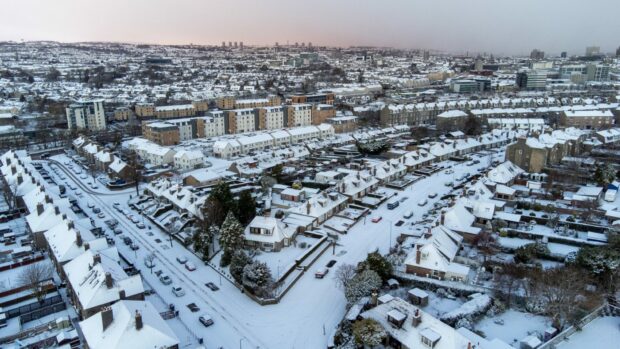There’s still time to put a bet on for whether this year will be a ‘white Christmas’… but what can the past tell us about the chances of one in the north and north-east?
The Met Office has said a white Christmas is most likely in north-west Scotland this year.
To mark the season – we’ve looked at the number of white Christmases across the country going back to 1959, and where has had the most snowfall days.
How do we determine what is a White Christmas?
It looks at a number of sites across the UK, including within the north and north-east, and analyses data from observing stations to look at snowfall, and snow depth.
Below is a chart showing all of the stations across Scotland which recorded any snowfall on Christmas day from 1959 to last year. 1995 was the snowiest year with 77 different locations in Scotland recording at least some snowfall.
How likely is a white Christmas anyway?
The Met Office has stated that since 1960, “around half of the years have seen at least 5% of the network record snow falling on Christmas Day. This means we can probably expect more than half of all Christmas Days to be a ‘white Christmas’.
“However, the Dickensian scene of widespread snow lying on the ground on Christmas Day is much rarer. There has only been a widespread covering of snow on the ground (where more than 40% of stations in the UK reported snow on the ground at 9 am) four times since 1960—in 1981, 1995, 2009 and 2010.”
The last time it was deemed to be a white Christmas in the UK was actually last year, but only 6% of the observing stations saw snow, and only 4% of those said there was snow lying.
In 2010, there was snow on the ground at 83% of the stations, which is the highest amount on record. Snow or sleet only fell at 19% of stations though.
So waking up to a blanket of snow this year is unfortunately just not that likely.
The chart below shows official white Christmases at a selection of weather stations across the north and north-east – showing how often each station has been luck enough to see that snowfall.
Where’s the most likely place to see a white Christmas?
We analysed data provided by the Met Office to see which locations saw the most snowfall days on Christmas Day.
This doesn’t mean it’s the most likely place this year, betting odds would answer that question, but these are the places that have seen the most white Christmases out of all the observing stations in Scotland.
Eskdalemuir in Dumfries and Galloway saw the most Christmas days with snowfall, followed by Lerwick in Shetland and Leadhills in South Lanarkshire.

Conversation